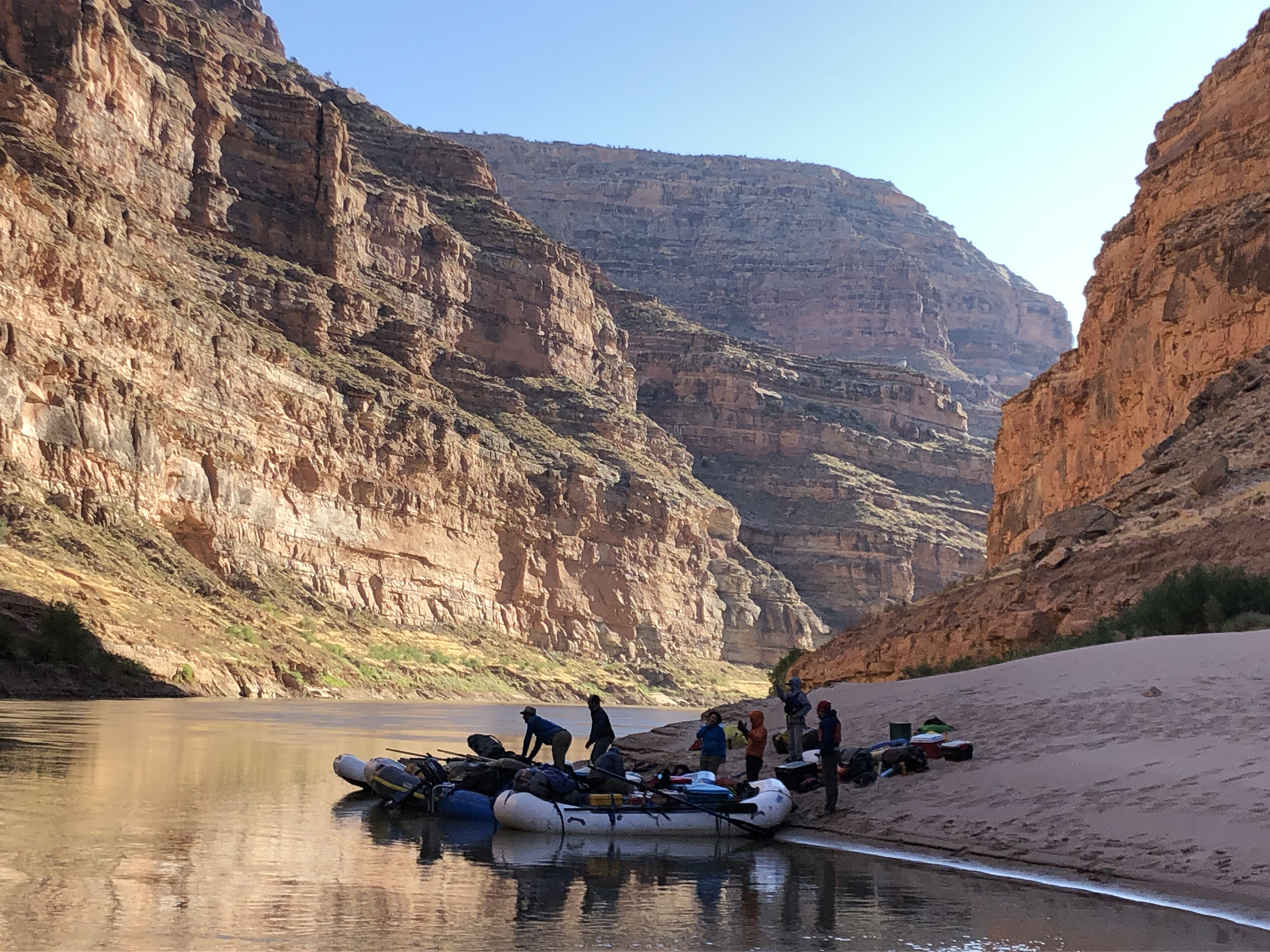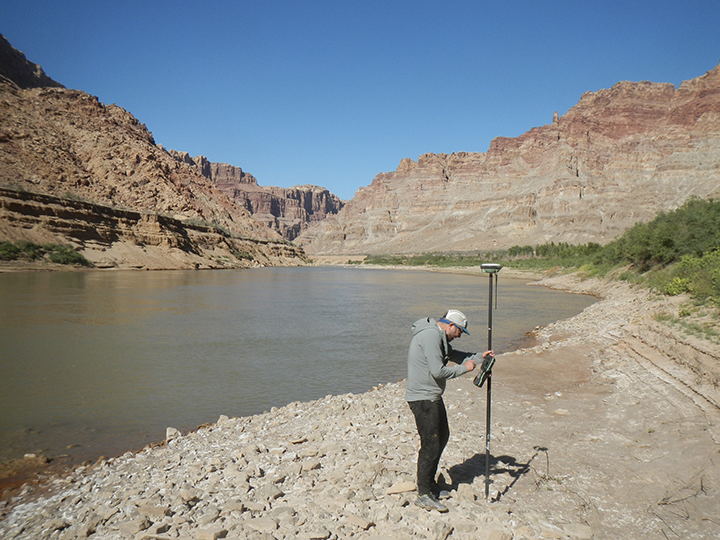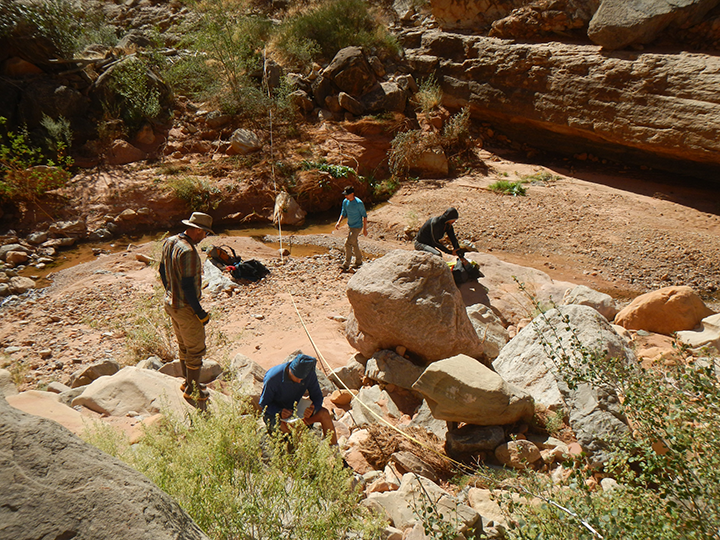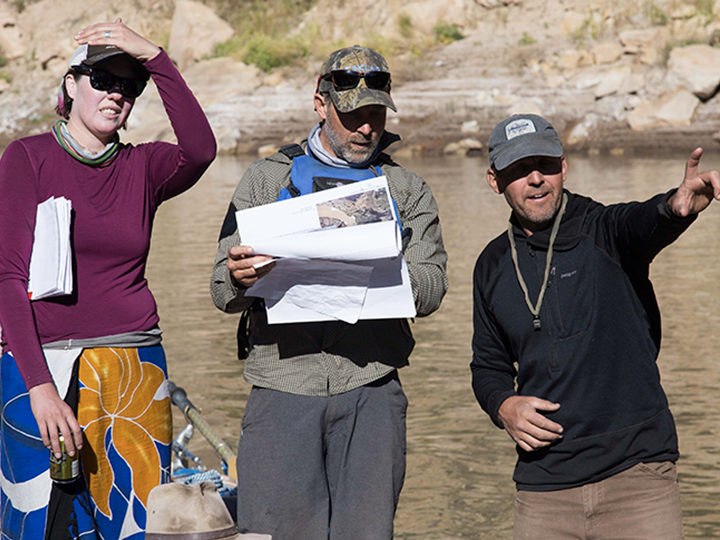
An interdisciplinary cohort of GCSC faculty joined government researchers and community partners over Fall Break for a week-long trip down the Colorado River to explore environmental change in Cataract Canyon. It was an exceptional immersive week integrating geology, hydrology, ecology, art, philosophy, history, policy, education, recreation, and more in Utah’s spectacular wilderness redrock river landscape.
The goals of this field trip included discussing research and educational opportunities along Cataract Canyon, exploring use of the river as an experiential classroom, promoting awareness of Colorado River issues, and collecting data that catalogues the dramatic changes occurring in Cataract Canyon.
Lake Powell flooded Glen Canyon and half of Cataract Canyon at its maximum elevation. Since 2000, lake elevation dropped 120 ft due to a complex combination of water management, drought and climate change. Low lake elevation has cascading effects, including the reemergence of rapids, the re-establishment of riparian ecosystems, and changes in sediment deposition. One goal of the trip is to help catalog ongoing environmental changes by developing repeatable measurements of change.
UU faculty and researcher participants included Wendy Wischer (Art & Art History), Bill Brazelton and Susan Bush (Biology), Sarah Hinners (City & Metropolitan Planning), Lauren Barth-Cohen (Education), Jennifer Follstad Shah (Geography), Danya Rumore (Law), and Brenda Bowen and Pete Lippert (Geology & Geophysics).
 |
 |
 |
